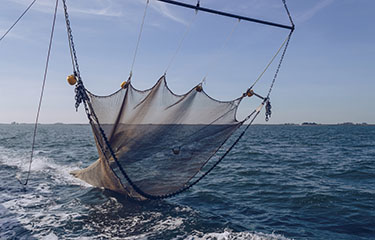Bottom trawling, a fishing method that entails towing a net along the ocean floor to capture target species, does not release as much carbon as air travel, according to a response paper that sought to debunk research published in 2021 and picked up by global media outlets, including The Guardian.
The response paper, “Quantifying the carbon benefits of ending bottom trawling,” released in May 2023, claims that Sala et al. – the authors of the original research – overestimated trawling’s carbon output by two to three orders of magnitude, or 100 to 1,000 times more than they should have, in the model they used, contending that the discrepancies are due to incorrect fundamental assumptions of the carbon cycle and flawed validation.
“Because there is such an uncertainty, potentially quite a large number, we need to study this effect of trawling on the carbon in the seabed in much more detail to understand how these effects happen, when they happen, and where so that we can properly quantify it,” Jan Geert Hiddink, a researcher at Bangor University and the lead author of the response paper, said.
Trawling creates sediment plumes that take days to disperse, and trawling tracks – caused by trawl nets that can dig about one inch into the sediment – can persist on the surface for months to years. Sala’s model assumes trawling and its tracks expose carbon previously buried in less-disturbed, deeper ocean floor sediment layers.
According to Sala’s model, around 70 percent of buried carbon, or labile carbon, in the sediment can be remineralized or broken down when resuspended due to trawling.
Hiddink said when organic carbon sinks to the seabed, bacteria and invertebrates naturally mineralize the element. Any buried, organic carbon is most likely inedible to bacteria and, therefore, unlikely to remineralize at a high rate, even when reexposed to oxygenated, active layers of the ocean.
“Carbon that is buried deeper in the sediment would not be particularly reactive to oxygen, even if you’re mixing it into the water column, because if that were the case, it wouldn’t be buried in the first place,” Hiddink said. “It doesn’t mean [Sala’s original research] can’t be important, but it does mean that the model makes no sense.”
Hiddink said knowledge on the effects of trawling remains extremely limited, making conclusions …
Photo courtesy of Anney_Lier/Shutterstock








